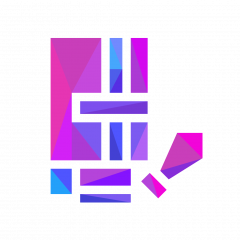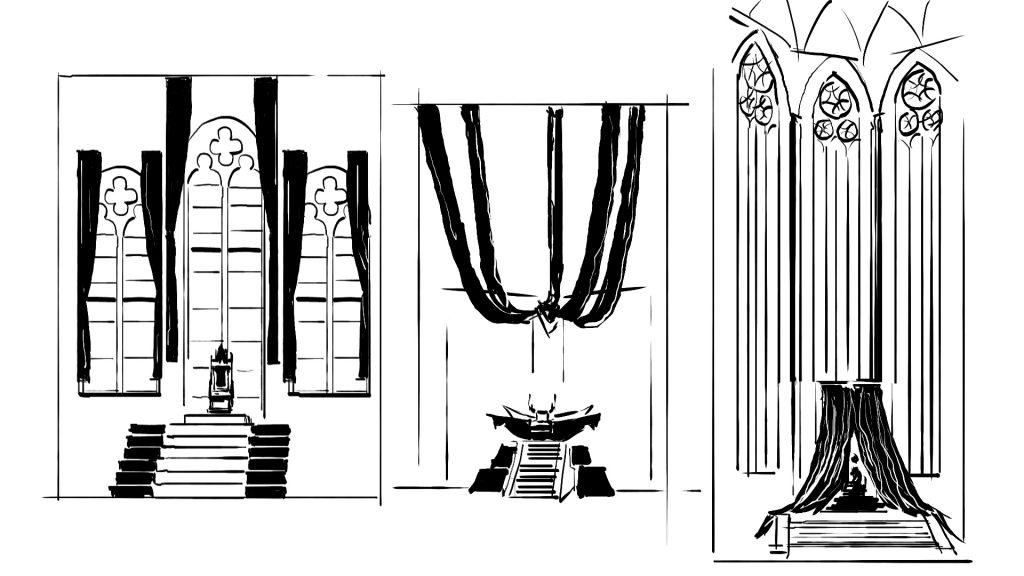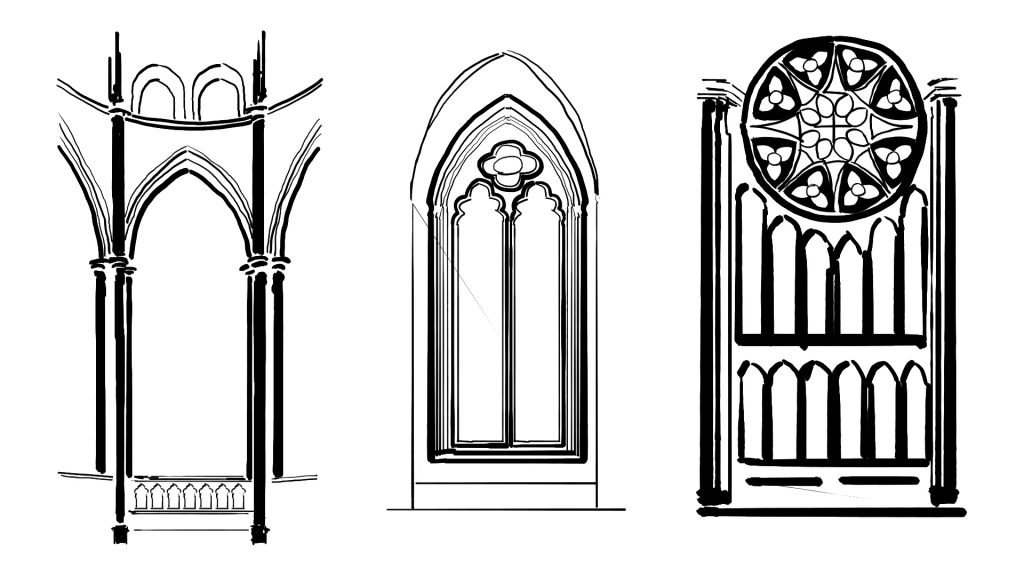To prepare for our halves presentation, we sat down to discuss and filter down the most important aspects of our development so far. We decided to split our presentation into the three major components of our team; Design, Art, and Programming.
We detailed the journey of our progress through each of the disciplines, from ideation of major concepts to our current state. We finished off each section with an idea of what our future plans are for each discipline.
The quick and easy discipline to discuss would be the Art team, as their future plans have little revamp from our current process. They will be continuing to iterate on all major characters and environments in the game, creating concept art for all assets that we anticipate to be created in the final product. For instance, we have begun to brainstorm different styles of clothing for the head of the church character, seen below:
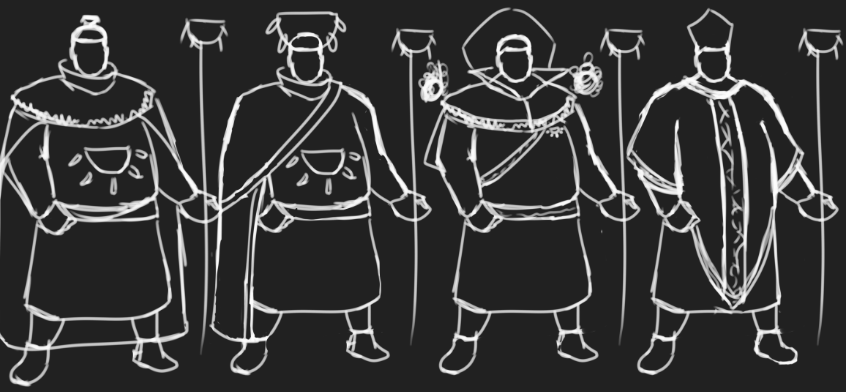
We are currently going through a process of iteration where the team sits down at the end of every other day to go over designs the artists have concepted to give feedback. For the image above, we discussed which cape and headpiece variations we like more for his character.
On the environment side, we created a simple 3D model of the Cathedral hall to begin using in our digital prototype. We also started sketching out symbols that could be used to represent the religious faction, also doing weekly reviews for what symbols we like and dislike.
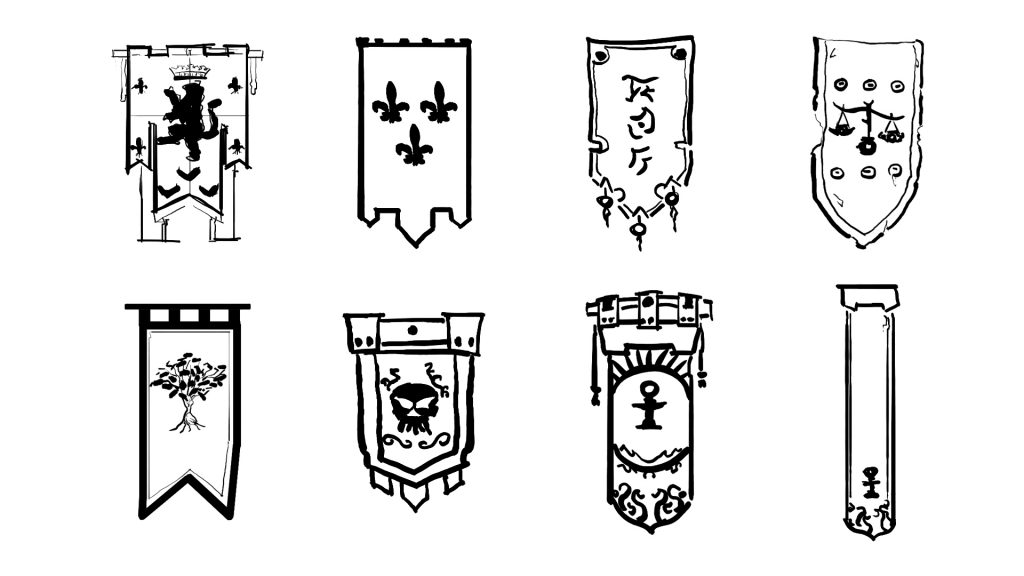
We also are delving into what the interior of the Cathedral will look like, such as the windows and throne within the Hall.
Where we have made some drastic changes is in our process of Design and Programming. We are fully converting to Sprint cycles from here on out. We are now at a point that our digital prototype contains the base playable version of our gameplay in 3D, so we can finally begin to playtest with it to naive guests. Basically, we will be playtesting our digital prototype every Monday with our advisors and other playtesters to get feedback on our current build. We will then sit down as an entire team to discuss the feedback we received, and what we should focus on for our next sprint to best match our feedback. We would then split design into working with the digital prototype to make sure our sprint is heading towards the direction we want it to go towards, and working with the physical prototype on ideas for the next mechanic to be implemented.
Essentially, the designers will both be working in the current sprint to make sure it is completed correctly, while also brainstorming and anticipating what our next sprint may entail. We think this process will help us to focus on the core of our experience, while also narrowing our scope into making only what is essential. Most of our previous “iterations” on our gameplay have only been through inside our team, so we may be biased as to what works and what does not. We want to be sure that our game is understandable and fun to players who have never seen it before, so we need to be testing with a naive audience to ensure that this is true.
